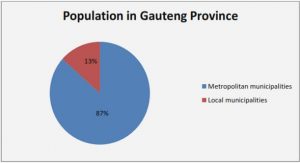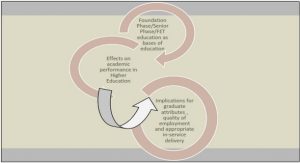Get Complete Project Material File(s) Now! »
Arius’ doctrine of the Trinity
Arius was influenced by Origen (Koehler 1951: 153). He changed and developed Origen’s theology (Lohse 1978: 55). According to González (1984: 269), he was ‘a disciple of Lucian in Antioch and who, like his teacher, presented the left wing of Origenism’. Arius’s thought originated from absolute monotheism (González 1984[1970]: 270). He just focused on the fact that God is the ‘one and only’ as monad (Pelikan12 1971: 194). He propagated ‘the form of extreme Christology, which denies that the Son of God (Christ) is real God’ (Pelikan 1971: 196). Because ‘the fundamental premise of Arius’ system is the affirmation of the absolute uniqueness and transcendence of God’ (Kelly 1975[1958]: 227), the being or essence of the Godhead could not be shared or communicated. Therefore Arius confesses that He (the Son) is a creature of God (kti,sma tou/ qeou/) and has a beginning (Seeberg 1936: 41; Loofs 1959: 184). As Philip Schaff points out, his thinking can be regarded as ‘deism’ and ‘rationalism’ (Schaff 1970: 643).
Arius sought scriptural support in order to protect his own ideas (Berkhof 1991[1937]: 84-85). His scriptural proofs for the Son as inferior to the Father were Prov 8:22(septuaginta); Mt 28: 18; Mk 13: 32; Lk 18: 19; Jn 5: 19; 14: 28; 1 Cor 15:28(Berkhof 1991: 85). Especially, ‘Col 1:15’ ‘ o[j evstin eivkw.n tou/ qeou/ tou/ avora,tou( prwto,tokoj pa,shj kti,sewj ’ played a decisive role. Arius confirmed that the phrase ‘ prwto,tokoj pa,shj kti,sewj ’13 indicates that the Logos is one of the creatures. This understanding stems from a part of Origen’s understanding (Lohse 1978: 36). Hodge (1982: 452) points out that in spite of his acceptance of the ‘distinct personality of the Son, his eternal generation, and calling freely him God’, Origen ‘would not admit his equality with God’ in the sense that ‘the Father, alone, according to him was o` qeo.j, the Son was simply qeo,j, the Son was qeo.j evk qeou/ and not avutoqeo,j’. However, Bavinck (1997[1951]: 280) explains Origen’s view by quoting his Contra Celsus (VIII, 12, 13) ‘the Father and the son have all the divine attributes in common: It is not true that besides God we also worship the Son, but in God we worship the Son.’ In this sense, Origen affirms the unity and equality. Widdicombe (1994: 69) explains ‘God as Father must have a Son in order to be what he is, and the Son as Son must have a father in order to be what he is’. The fatherhood of God and the generation of the son must be closely connected with each other (Widdicombe 1994: 70). This implies that ‘the concepts of the eternal fatherhood of God and the eternal generation of Son also play an essential role in Origen’s understanding of God’s nature in another way’ (Widdicombe 1994: 71).
The terms ‘ousia’ and ‘hypostasis’
As successor to Athanasius, Basil followed the Nicene faith. In fact, as Davis (1987:111) states, ‘in Basil, Athanasius found a worthy successor’. However, Anastos (1981: 69) points out that ‘the major problem for the theologians of the Early Church was to explain how the three Persons of the Trinity could be regarded as one God, not three. The solution of the dilemma was found in the orthodox definition of the divine ousia with its three hypostaseis’. Prestige (1981[1936]: 228) says that ‘he(Basil) probably thought, according to the principle of the solidarity of the human race, that the whole of human nature is presented in each individual man, so that his argument from particular men afforded a not entirely inadequate illustration of the unity of God.’ He adds that ‘he(Basil) certainly seems to imply that the only fact which constituted the several hypostases of the godhead was that Fatherhood, Sonship and Sanctification, and that, apart from these ‘idiomata’ of presentation, the ousia of the three Persons was identical’.
As mentioned in the section on Athanasius, these terms have raised some confusion, because even Athanasius used these terms without distinction in some of his writings. As Prestige (1981: 167) points out, ‘elsewhere Athanasius (Ad Afr, 4) lays it down that hypostasis means “being”(ousia) and has no other significance than simply “ that which exists”; the hypostasis and the being mean existence, for it is, and it exists’. According to Prestige (1981: 186), for Basil, the word ousia implies ‘a single object of which the individuality is disclosed by means of internal analysis, an object abstractly and philosophically a unit’, instead, the word ‘hypostasis’ implies that ‘the emphasis lays not on content, but on externally concrete independence; objectivity in relation to other objects’ (Prestige 1981: 169). However, for Basil, as Alston (1999: 186) points out, ‘the distinction between ousia and hypostasis is the same as that between the general and the particular’48.
1 INTRODUCTION
1.1 PRELIMINARY REMARKS
1.2 PURPOSE OF STUDY AND LIMITATION
2 THE BEGINNING OF THE CONTROVERSY
2.1 ARIUS’ DOCTRINE OF THE TRINITY
2.2 THE EXCOMMUNICATION OF ARIUS
3 ATHANASIUS’ THEOLOGY
3.1 THE DOCTRINE OF THE TRINITY AS A RESPONSE TO ARIUS
3.2 HOLY SPIRIT
4 BASIL’S DOCTRINE OF THE TRINITY
4.1 THE TERMS ‘OUSIA’ AND ‘HYPOSTASIS’
4.2 THE DOCTRINE OF THE TRINITY
4.3 THE HOLY SPIRIT
5 GREGORY OF NAZIANZUS
5.1 THE DOCTRINE OF THE TRINITY
5.2 THE PROCESSION OF THE HOLY SPIRIT
6 GREGORY OF NYSSA
6.1 HIS DOCTRINE OF THE TRINITY
6.2 THE CHRISTOLOGY OF GREGORY
6.3 THE HOLY SPIRIT
7 BACKGROUND OF RIVITALIZATION
7.1 SCHLEIERMACHER
7.2 ATHEISM
8 BARTH’S DOCTRINE OF THE TRINITY
8.1 THE DOCTRINE OF THE REVELATION
8.2 THE ROOT OF BARTH’S DOCTRINE OF THE TRINITY
8.3 THE DOCTRINE OF THE TRINITY
9 MOLTMANN’S DOCTRINE OF THE TRINITY
9.1 POLITICAL THEOLOGY
9.2 THE THEOLOGY OF THE CROSS
9.3 MOLTMANN’S UNDERSTANDING OF ‘THE IMMANENT AND ECONOMIC TRINITY’ AND THE DOCTRINE OF THE FILIOQUE
10 EBERHARD JÜNGEL’S DOCTRINE OF THE TRINITY
10.1 THE DOCTRINE OF GOD
10.2 THE DOCTRINE OF THE TRINITY
11 PANNENBERG’S DOCTRINE OF THE TRINITY
11.1 HISTORY AND REVELATION
11.2 THE DOCTRINE OF THE TRINITY
12 EVALUATION
12.1 EVALUATION AND COMPARISON OF THE FOUR LEADING 20TH CENTURY PROTESTANT THEOLOGIANS (BARTH, MOLTMANN, JÜNGEL, AND PANNENBERG).
12.2 A REFORMED ASSESSMENT
12.3 IMPLICATIONS FOR PRACTICAL CHURCH LIFE
12.4 CONCLUSION






